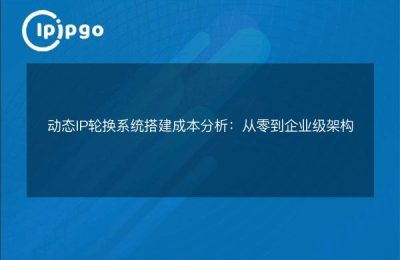
How to access the Internet with a proxy IP
In the current Internet era, more and more people are using proxy IPs to access the Internet as network regulation is tightened and the importance of privacy protection becomes more and more prominent. Proxy IP not only hides the user's real IP address, but also provides a safer and more stable Internet connection. So, how can you use proxy IP to access the Internet correctly? This article will give you a detailed introduction.
Understand the basic concepts of proxy IP
First, let's understand the basic concept of Proxy IP. Proxy IP, the IP address of a proxy server, is an intermediate server between the user and the Internet. When a user sends a request through a proxy server, the proxy server communicates with the target server instead of the user and returns the response from the target server to the user. In this way, the user's real IP address is hidden.
Choosing the right proxy IP provider
To use proxy IP properly, you first need to choose a reliable proxy IP provider. There are many proxy IP providers on the market, but not all of them can be trusted. When choosing a provider, you should consider the following factors:
1. Reliability: Whether the provider provides stable and reliable proxy IP. you can get information about the reliability of the provider by checking user reviews and forum discussions.
2. Geographic coverage: Whether the geographic coverage of the proxy IP meets your needs. If you need to access websites in a specific country or region, make sure that the provider offers proxy IPs in the appropriate geographic location.
3. Supported protocols and authentication methods: Determine whether the vendor supports the proxy protocols (e.g., HTTP, HTTPS, SOCKS) and authentication methods (e.g., username-password, IP whitelisting) that you wish to use.
Configuring Proxy IP Settings
Once you have selected a suitable proxy IP provider, you will next need to configure the proxy IP settings. The specific steps are as follows:
1. Obtain a proxy IP address and port: After you purchase a proxy IP, the vendor usually provides an IP address and corresponding port number. Record this information for use in subsequent configurations.
2. Configure browser proxy settings: Open the browser you are using, go to the Settings/Options menu, and find the proxy settings. Depending on the browser, the specific operation may vary. In general, you need to enter the proxy IP address and port number, and select the proxy protocol (e.g. HTTP, HTTPS).
3. Test Proxy IP Connection: After the configuration is completed, you can check whether the Proxy IP has successfully taken effect by visiting an IP query website. If the IP displayed on the website is the same as the proxy IP you configured, it means the proxy IP is set successfully.
Notes and advanced tips
There are a few things to keep in mind when using a proxy IP to access the Internet:
1. Security: Choose HTTPS proxies as much as possible to ensure data encryption during transmission. In addition, do not enter sensitive personal information when using unknown proxies.
2. Response speed: The response speed may vary from one proxy IP to another. If you need high speed access to the Internet, you can try to use more than one proxy IP and test the response speed, choose the most suitable one.
3. Refresh Proxy IP: Some proxy IP providers change IP address periodically to ensure the stability and security of the proxy IP. So, it is important to update and refresh the proxy IP regularly.
To summarize, using a proxy IP to access the Internet can improve network security and privacy protection, but you also need to choose a reliable proxy IP provider and configure the proxy settings correctly. By following the above steps and precautions, you will be able to easily access the Internet using a proxy IP. We wish you a pleasant journey in the online world!








